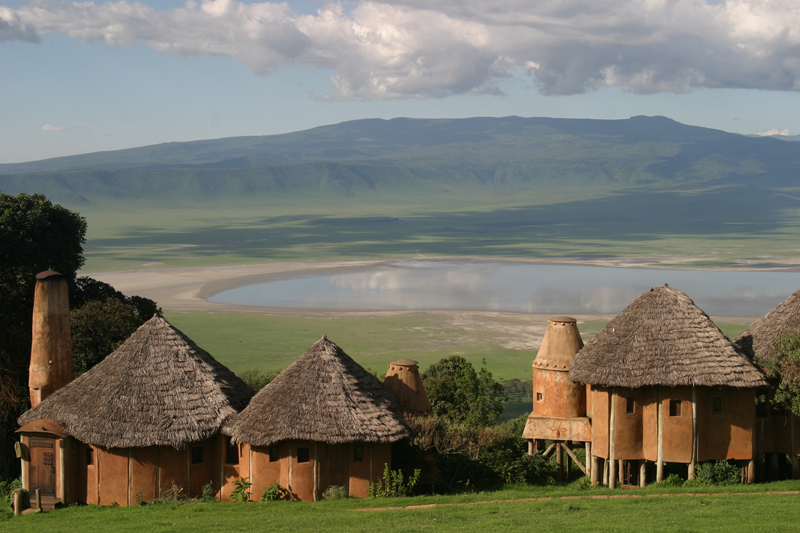TANZANIA NGORONGORO CRATER

In the 1920’s it was treated as part of the Serengeti. It is the largest unbroken volcanic caldera ( collapsed volcano) in the world, with the crater itself covering an area of 259 square kilometres and having walls over 600 meters high. It was formed by geological faulting in the eastern arm of the Great Rift Valley two to three million years ago. The volcano created was probably larger than Mount Kilimanjaro. the quick withdrawal of molten lava beneath it made the centre collapse, creating the crater we see today. the name Ngorongoro comes from a Masai word, llkorongoro which was the name given to the age group of Masai warriors who wrested the highlands from the datong, their previous occupants. The datong had in turn taken them from their predecessors the Hadzabe (bushmen/hunter-gatherers). The name llkorongoro echoed the sound of the battle bells the Masai warriors wore when they first occupied the highlands in the year 1800.
This sound “koh-rohngoroh” struck terror into the hearts of their enemies. The wa-masai have also given their own names to the walls and floor of the crater, the walls are known as en tiak which means sheer drop- while the floor is ramat meaning health- land. Being a conservation area rather than a National Park the Masai are allowed to bring in their animals to graze and water, making it possible to see wild animals and domestic livestock in the crater together. We normally camp on the rim of the crater, (simba campsite) and from here, it is about one hours drive around the rim to the point where we reach the descent road. from here there are spectacular views across and down into the crater. It can be very cold at this height (2300 mts) so it is advisable to wear warm clothes until we reach the floor of the crater. the road follows a winding and very steep route known as the Seneto Descent.
WILDLIFE
Wildlife the Ngorongoro Crater offers some of the best game viewing in all the National Parks of Tanzania. it has a rich variety of resident birds and animals that make the area their home. Its varied habitats support between 30.000-40.000 animals most of the year. In the crater the mandusi and gorogor swamps are areas of marshland, the lerai forest is dominated by yellow barked acacia trees, and in the centre is Lake Magadi, a soda lake, often visited by flocks of flamingo’s. The rainy season lasts from November through to May, with the dry season running from June through to October. June and July are the coldest months of the year. The rim of the crater is often shrouded in dense cloud.
ANIMALS
Most of the animals are resident here. All the typical plains herbivores, including wildebeest, zebra, grants and thomsons gazelle, are well represented. All the most sought after animals, cape buffalo, waterbuck, eland, hartebeest, lions, elephant, black rhino, hippo, jackal(-silver-backed and golden), are well represented. Cheetah and leopard are present but sometimes difficult to see.
BLACK RHINO – Ngorongoro is one of the few places left in east Africa where one can still see this rare and extremely endangered species.
BIRDLIFE
Is abundant in the crater, particularly in the marshlands and Lake Magadi. ostriches, kori bustards, secretary birds, and crowned cranes can be seen as well as vultures, egrets, herons, geese, and flamingos.